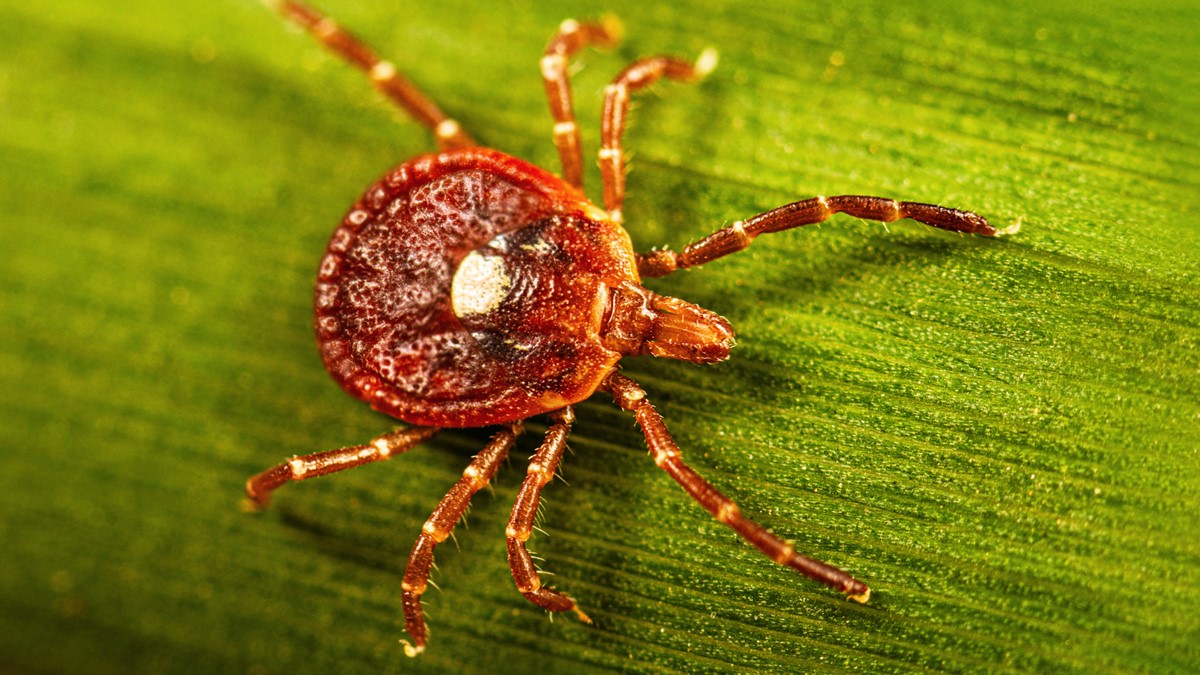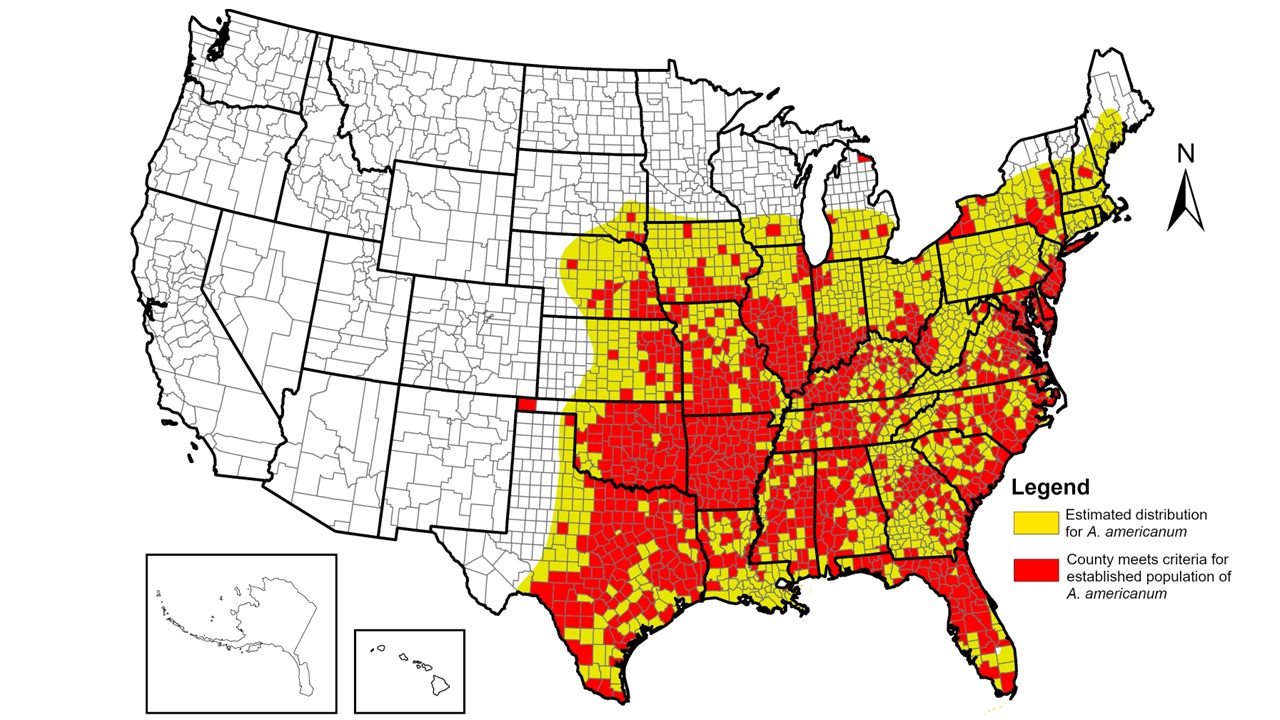At a glance
- The lone star tick (Amblyomma americanum) is widely distributed in the Northeast, South, and Midwest United States.
- A. americanum is a very aggressive tick that bites humans. The adult female is distinguished by a white dot or “lone star” on her back.
- The nymph and adult females most frequently bite humans and spread disease.

Map

Estimated distribution of the lone star tick (Amblyomma americanum) in the United States and counties with established populations through 2024.
Download the data set here.
A note about established status
An established county means six or more lone star ticks of a single life stage or more than one life stage of lone star ticks was collected in a county within a 12-month period. A county that is not labeled as established does not mean ticks are absent. Once a tick species is recorded as established within a county, the status will remain "established" in subsequent years.
About lone star tick surveillance
Amblyomma americanum distribution in the 1750s reached across the eastern United States. Since then, tick distribution receded as forested land was reduced and white-tailed deer populations decreased. White-tailed deer are a keystone host for this tick.
Since the 1940s, conservation measures and relocation of deer have led to increased numbers and range of white-tailed deer populations in the Eastern United States. Associated with the expansion of white-tailed deer populations, the lone star tick has repopulated their historical range.
Ticks at the edges of the distributional range have been reported, but suitable conditions may not be stable enough to allow establishment. Also, many counties that were previously designated as having no records of A. americanum may change status to "Established" over time often due to the county being sampled and documented for the first time. Changes in tick county status do not necessarily indicate tick movement or changes in abundance but simply show an understanding of the current known tick distribution.
